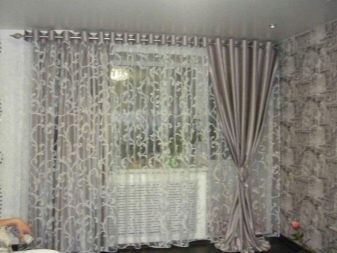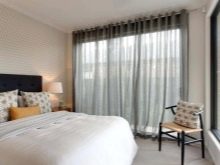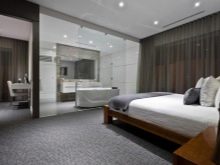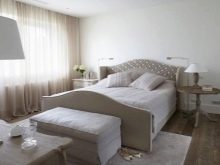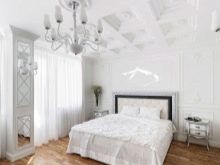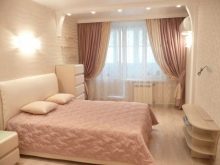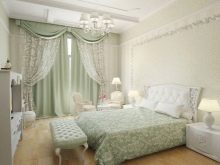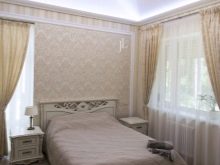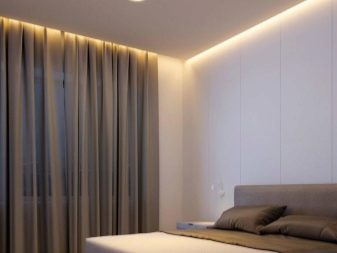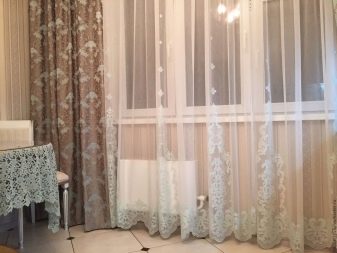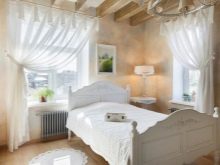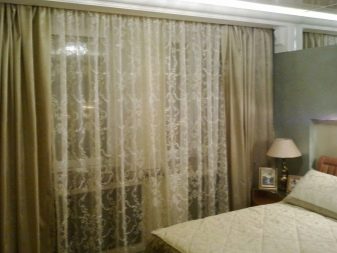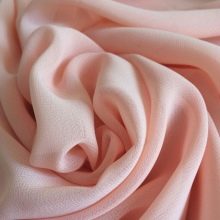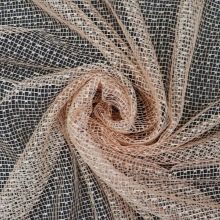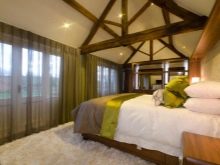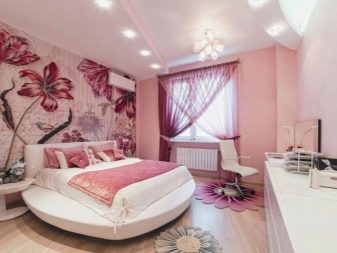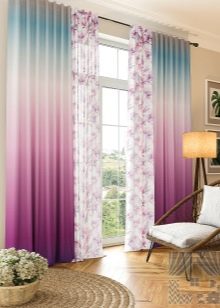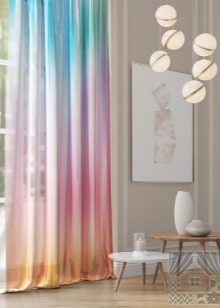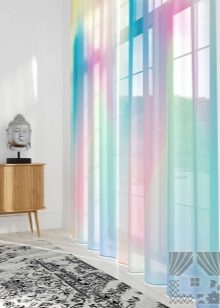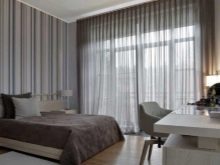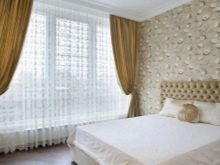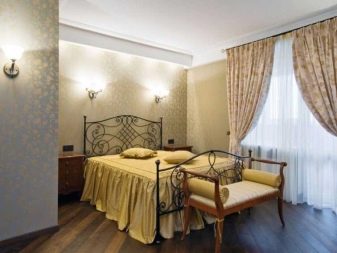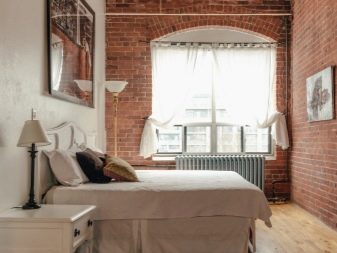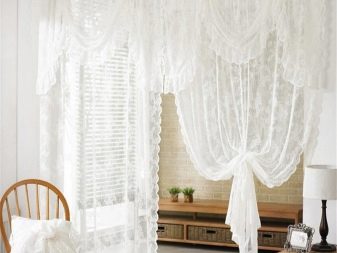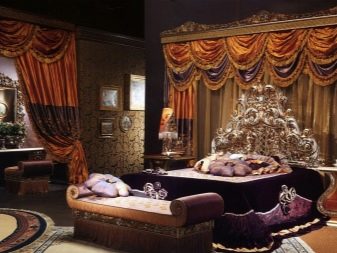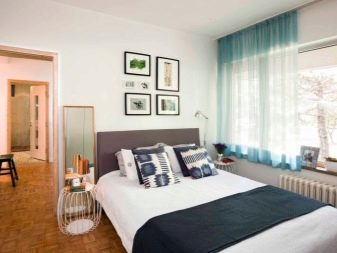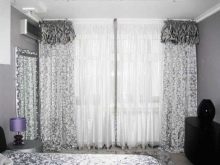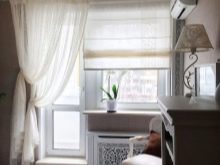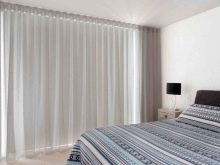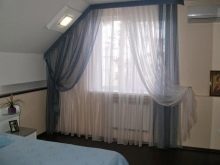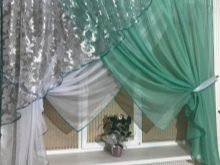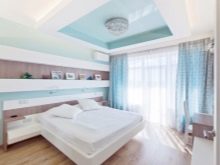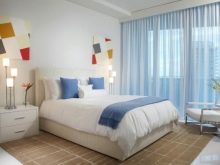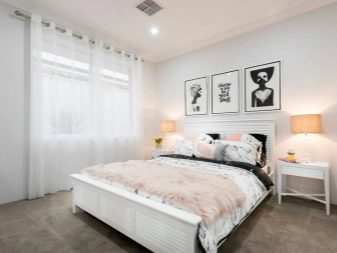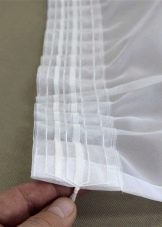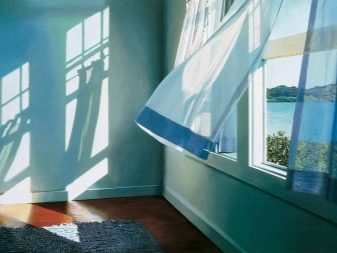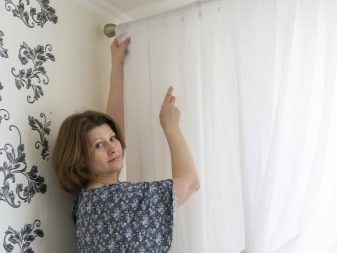Choosing tulle in the bedroom
The design of the window opening in the bedroom plays the role of one of the leading elements of the interior. Curtains, curtains and tulle not only regulate the luminous flux, but also serve as a style detail. When choosing curtains for the bedroom, it is necessary to take into account the overall design of the room - they can become a background for decor items and furniture, as well as play the role of a bright accent.
What is it used for?
First, a little history. The fabric got its name in honor of a French town located in the southwestern part of the country. It was there that weavers first managed to create light and airy matter. It is known that in the 15th century, the French king ordered the masters to come up with such a canvas through which it would be possible to see everything that was happening around, but at the same time no one would be able to recognize the person hidden behind it. According to one of the existing versions, this was the wish of the future queen, according to the other - the princess. Both did not want to be recognized by the general public.
The king fulfilled the wish of his lady, the weavers invented the fabric, which today is known as tulle. This fabric quickly fell in love with the royal nobility, and they began to use it for sewing curtains. Following the French court, the trend was quickly picked up by aristocrats in other countries.
Of course, these days tulle is made from other materials, but its functional load remains the same.
The demand for tulle for creating window curtains is due to the ability of the canvas to transmit the sun's rays and air flow. A translucent curtain in the bedroom reliably protects households from prying eyes, while bringing a feeling of lightness and weightlessness to the interior. Another advantage of tulle is that it effectively hides the imperfections of the window opening and visually aligns the geometry of the room. And if the room has mirrors and glossy surfaces, then the light will create beautiful patterns, which will add a special flavor to the atmosphere of the recreation area.
Tulle has become one of the most common window decoration methods today. The decor suits any stylistic direction, from timeless classics to modern solutions. Tulle can be hung in rooms with any decor and furnishings. The canvas looks organically in both spacious and small rooms, in addition, you can always choose a suitable option for windows of different sizes.
There is only one drawback of this material. Even the densest tulle will not darken one hundred percent. Therefore, for people who are accustomed to sleeping in complete darkness, it is better to combine them with blackout curtains.
Materials (edit)
It is very easy to confuse tulle fabric with lace - it is a translucent lightweight fabric, which is often decorated with a textured pattern. On sale you can find smooth fabrics, as well as almost transparent fabrics. Usually, the edges of such products are shaped figured, which makes them look like guipure.
For the manufacture of tulle, different fabrics are used - linen, cotton, silk and synthetic. In their pure form, they are quite rare, mostly they are made to order. Most often, mixed and combined tulle fabrics go on sale.
Organza
This is an elastic, rather tough matter, but at the same time transparent and practically weightless. It can be matte or glossy. Forms aesthetic folds when draped.
This fabric is most often used for the manufacture of curtains, it is made from natural silk or polyester is added - the qualitative composition of the threads determines the final price of the product.
Veil
The veil is made of cotton threads, tightly intertwining them. It is very lightweight, soft and pleasant to the touch. The advantage of the veil is that it allows air to pass through in full, creating full ventilation in the room. However, like any other natural fabric, the veil attracts dust and therefore needs to be washed regularly.
Viscose
The canvas is of artificial origin, it is distinguished by lightness and transparency. In stores, such tulle is presented in a wide variety of shades, textures and design options. Of course, such a fabric is extremely short-lived. But this drawback is more than offset by the democratic price of the canvas.
Fatin
Translucent, lightweight, almost weightless, but at the same time quite tough material. It is most often used as an additional layer for tulles made of softer and softer fabrics.
Other
Less commonly, other fabrics are used for the manufacture of tulle:
- chiffon - light flowing matter, in the design of the bedroom, it invariably looks appropriate and organic;
- nylon - the lightest material, gives the impression of almost transparent and airy;
- nylon - according to its characteristics, this fabric resembles nylon, but only slightly stronger than it;
- mesh jacquard - this tulle is made mainly of synthetic yarns.
Colors and prints
The most popular is the traditional white tulle. Although recently, designers have been offering new items in green, blue, lilac, light gray, blue, yellow, pink, brown, turquoise and pink colors. It should be noted that today, when arranging sleeping areas, two basic trends are combined - originality and naturalness. Thus, the color of the tulle should, on the one hand, be found in the natural environment, and on the other, surprise. It is no coincidence that modern manufacturers are increasingly offering canvases that are difficult to give an unambiguous definition.
Blue-beige, grayish-green, pink-gray are just some of the descriptions of fabrics that are currently in vogue.
As for the flashy orange and red colors, they are organic in the design of living rooms and children's rooms. For the bedroom, they are considered not the best choice. Psychologists say that these shades have a tonic effect on a person, cause vigor and activity. A different atmosphere is required in the recreation area, so such colors should be present there in minimal quantities.
The trend of recent years is the fashionable idea of ombre. This tulle consists of double-triple colored stripes of different tones, smoothly merging into each other. For example, the white top blends into the blue middle, which gradually fades into purple.
Tulle can be plain, have prints, three-dimensional patterns and even photo printing. Usually, the patterns on the curtains are in harmony with the rest of the bedroom textiles, furniture upholstery, shades or decorative items.
Styles
The overall design of the sleeping area makes strict requirements for the design of the tulle. So, for high-tech and minimalism styles, only a single-color canvas is allowed without any patterns and prints. The main colors are white, gray and black. Other shades are possible, but they should be combined with the overall design of the room. In such interiors, draperies are not needed, the tulle should be even, as smooth as possible and with all its appearance emphasize the laconic lines and forms that are present in the concept of these styles.
But in the Provence style bedroom, materials with floral patterns or multi-colored canvases look organically. However, in this case, it is important not to allow excessive variegation.For example, if you bought curtains with flowers, then you should take a solid tulle for them. In country style, veil and rope tulles are appropriate.
Cropped tulle is suitable for loft, cubism and other laconic styles. Long draperies look harmoniously in the English Italian classics, retro, Scandinavian design.
For a vintage style, shabby chic lace fabrics are suitable. In a space where it is important to emphasize the rigor of geometry, it is better to give preference to striped products.
In eclecticism, art deco or baroque, a floral pattern looks good, in this case it should be of the same color as the main fabric, only differ by a couple of semitones.
Size and length
Bedroom tulle can be long or short. Long sheer curtains can be either one continuous canvas, or make up a set of two halves. Sometimes windows are decorated with a large number of elements, for example, a set of three or four narrow stripes - this is a fairly practical technique that provides unhindered access to the window. This is especially true if there are many indoor plants on the windowsill.
In shape, such curtains are rectangular or square, less often they are made in a triangular or semicircular shape. Combinations of two or three varieties look very stylish. Nowadays, asymmetric design is very popular; it is relevant when decorating rooms with a balcony.
In some cases, sill-length tulle is used. Such curtains are optimal if there is a radiator, furniture or a children's play area under the window. By the way, if the window is decorated with indoor flowers, then access to them in this design will be much easier.
In general, the design of curtains directly depends on how important accessibility to the window sill and window sashes is. If we take into account only the aesthetic side of the issue, not taking into account the practical, then soon even the most luxurious and expensive tulle will come into complete disrepair. It can be tightened with a sash or inadvertently stepped on the edge of the canvas. Well, if you cannot make a choice between a long and a short model, then choose an oblique one - such curtains cover only part of the window opening and look elegant in any design.
How to choose?
When decorating windows, it is necessary to remember about the functionality of the room, and with this in mind, select the parameters of the canvas and the color scheme. In sleeping areas, it is very important to create the most relaxing, calm atmosphere while maintaining absolute privacy. At night, curtains will be responsible for this, in the daytime - light tulle.
If you live on the ground floor of a multi-storey building, or neighbors are looking out of your windows, it will be right to choose a thin translucent fabric, but with a large number of folds.
They will allow air to pass through, but will not allow the outsider to see what is happening in the bedroom.
The choice of the density of matter directly depends on where the windows of the sleeping area go. If these are the southern and eastern sides, then it is better to give preference to dense fabrics that scatter light. For example, organza with embroidery or dense mesh - this option will be especially good in the summer. If the room faces west and north, then, most likely, there is a lack of natural light in it. The best solution in this case will be a thin and transparent veil.
How to hang?
The most practical option for attaching tulle is to fix it on the eyelets. They can be metal, wood or plastic. The curtain is fixed on rings at equal intervals, while the larger this gap, the deeper the fold will turn out.
In all other cases, the following sequence of actions is followed:
- in the upper part of the tulle, dense nylon threads are pulled, in some models they are already available;
- the threads are pulled together to a width corresponding to the size of the cornice;
- after that, it remains only to align the tulle, creating beautiful folds, and fix the threads on the curtain tape.
The canvas is ready - the tulle can be hung on the cornice.
Care Tips
In order to minimize the maintenance of curtains, time should be taken to prevent contamination. To do this, you need to regularly ventilate the room by opening the windows completely. With the flow of fresh air, dust particles are carried away from the surface.
The window should be left open for several hours.
The rest of the care activities involve washing and ironing. When washing, it is very important to take into account the characteristics of different materials. Most of the fabrics used to make tulle are hand or gentle machine wash. Any cleaning agent can be used; adding a small amount of dishwashing liquid to the water gives a good effect. The spin should be delicate.
Hang the linen back immediately after washing. If the fabric is synthetic and dense, then you do not need to iron it additionally. Long and cotton fabrics usually require additional ironing - in this case, it is important to set the appropriate mode and pre-wet the surface of the curtain.
If the tulle is made of viscose or silk, then for smoothing it is best to take damp gauze folded in 3-4 layers.

